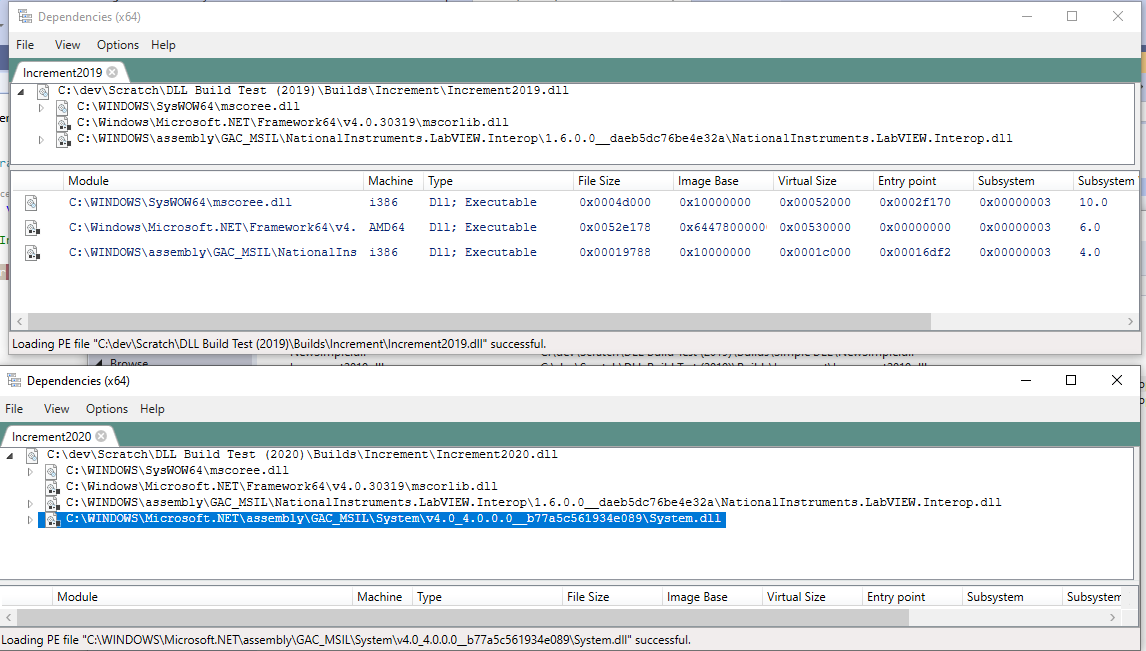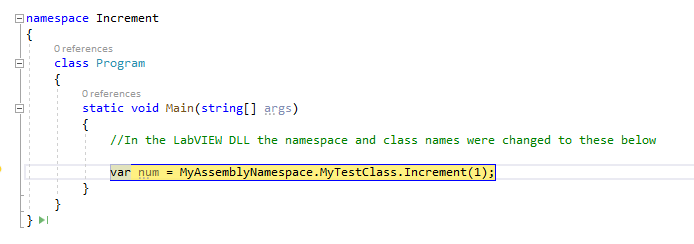-
Posts
1,197 -
Joined
-
Last visited
-
Days Won
112
Content Type
Profiles
Forums
Downloads
Gallery
Everything posted by Neil Pate
-
@Lipko have you tried toggl? I used it for many years when I was a freelance to track my time. It was ok, but half the time I forgot to start and stop the timer. I suspect having something monitoring your files is also going to be pretty inaccurate.
-
We need a NAS for Rolf and ShaunR and a few others around here. I am pretty sure we cannot replace them!
-
Not entirely related, but I got in big trouble in my first real engineering job. The company was moving premises and we all helped pack up. I had a cupboard next to my desk filled with all these weird old cables which I happily threw out as I did not recognise any of them and just assumed they were junk. Turns out we needed them to support some old telecomms equipment from the days when everyone seemed to have their own custom cables! Cannot recall how the story ended, I think somebody did some dumpster diving and managed to find the bag! I kept my job 🙂
-

NI abandons future LabVIEW NXG development
Neil Pate replied to Michael Aivaliotis's topic in Announcements
I can say without any doubt that online clothing stuff is good quality or not. -

Separating "installer" development from code development
Neil Pate replied to infinitenothing's topic in Source Code Control
This is how I include the RTE as part of an installer. Note: outside of the scope of the installer I manually unpack the relevant NI distributed RTE -

Separating "installer" development from code development
Neil Pate replied to infinitenothing's topic in Source Code Control
I just include the whole runtime and don't bother trying to cherry pick the perfect dependencies. I did try this once upon a time but could never figure out the right dependencies. -
Nice idea hooovahh, I did not think to solve it this way. I already have a nice Steel Series mouse which comes with a macro configurer and I have some set up for LabVIEW but I always forget to use them! This might be one I remember to use 🙂 My problem with using the middle mouse button is that unless other applications use it already (like Chrome or Firefox to close tabs) so you need to make it application specific. My Steel Series configurer has a way to do this but it seems to be a bit clumsy especially when dealing with multiple versions of LabVIEW and then switching over to a browser mid session. Is this XMouse Control thing any good?
-
Today I Learned: you can pan around the block diagram by pressing Ctrl-Shift and then clicking and dragging the left mouse button! Not as useful as middle button dragging, but still interesting.
-
As suggested here This is something us LabVIEW devs have gotten used to not having but is now so common in other graphical tools. Pan to scroll the block diagram or front panel seems like something I would actually use quite regularly.
-

Separating "installer" development from code development
Neil Pate replied to infinitenothing's topic in Source Code Control
Another option... Use a third party installer. InnoSetup works really well. -
We could always just make dumb posts and rate each other 😉 For some reason this seems appropriate...
-
Yeah that sounds familiar. A terrible workaround would be to make a transparent button with your cool symbol on it and overlay it on the row header, and have it intercept the click event. I have to do crap like this so often in LabVIEW to get nice looking GUIs 😞
-
Just be careful. Weird things sometimes happen when you change the font of just some of the text in a table. I recall trying to get some Greek characters into a table and header and I could not make it work properly. This was waaay back in 2010 so things might have changed. Please let us know if you get it working nicely!
-
One simple (but mostly unsatisfying way) is to make it up out of other characters. \/ /\ For example see how it is done in VIPM.
-
Recently I have tried to package up some code as a .NET Assembly. I managed to pack some pretty complicated LV2019 code (including some LabVIEW classes and dynamically called code) into an assembly and was able to call it just fine from a simple C# console application. However, this does not work when I moved over to LV2020. To make things simple to try and get to the root of it I created the simplest possible example I can think of. One copy is in LV2019 and it works fine, the other is LV2020 and it does not work. The assembly builds fine in LV2020, and indeed is callable from LabVIEW code. The test is just a simple Increment VI. This works fine when the assembly is built using LV2019, the num variable is correctly 2 after running this line of code. However in LV2020 I get the following exceptions after running that line System.TypeInitializationException HResult=0x80131534 Message=The type initializer for 'MyAssemblyNamespace.LvClient' threw an exception. Source=Increment2020 StackTrace: at MyAssemblyNamespace.MyTestClass.Increment(Double input) at Increment.Program.Main(String[] args) in C:\dev\Scratch\DLL Build Test (2020)\Source\C#\Increment\Increment\Program.cs:line 10 Inner Exception 1: FileNotFoundException: Missing Dependency in: Inner Exception 2: VIAssemblyException: Missing Dependency in: I have tried playing around with including the LabVIEW Interop assembly in the C# application (C:\Program Files (x86)\National Instruments\Shared\LabVIEW Run-Time\2019\NationalInstruments.LabVIEW.Interop.dll) and changing this to 2020 for the LV2020 version, it does not seem to make any difference. The LV2019 version runs without this assembly included in the project. Is this something to do with the GAC? This is now getting into the details of .NET that I am not really very familiar with. Does anyone have any tips for things I can look into? I have attached a zip of everything for anyone curious. Build Test.zip
-
One of my old customers is having an issue with the TSM-1017 losing its ability to be calibrated. The system runs on a cRIO and the screen is attached with a USB cable as well as the DVI cable. On Linux RT there is an application you can run that brings up a four point calibration, but apparently this application does not run anymore. This did all work once upon a time, but the system has been out of my hands for a very long time. NI support gave some very manual linux-ey commands to reinstall drivers or something, but I do not think this worked. Has anyone come across a situation like this before?
-
https://meh.com/forum/topics/building-the-plane-on-the-way-up tl;dr the ground based decoder for some of the comms on Voyager was built *after* the craft was launched, and it still to this day reliably receives data. Wow!
-
Exactly why we need NI to buy in to the idea, otherwise it will never get off the ground.
-
Excellent idea, I have added my kudo! I don't think this will get much traction from NI but it would be really nice to see this as something semi-official. Once you know what you are doing it is not super complicated to get RT linux running on a desktop.
-
I have created some code that allows me to translate the GUI language on the fly at runtime. Is anyone else interested in this? At the moment it is a bit coupled into my actual application but I think I can extract the relevant bits. It supports pretty much any latin codepage language and once upon a time did also support Chinese (but I have not tested that in quite some time). Obvious disclaimer here: I just want to share what I made, but use at your own risk, and I am definitely not a UTF8/16 whatever expert so there might be some stuff that is just plain wrong.









